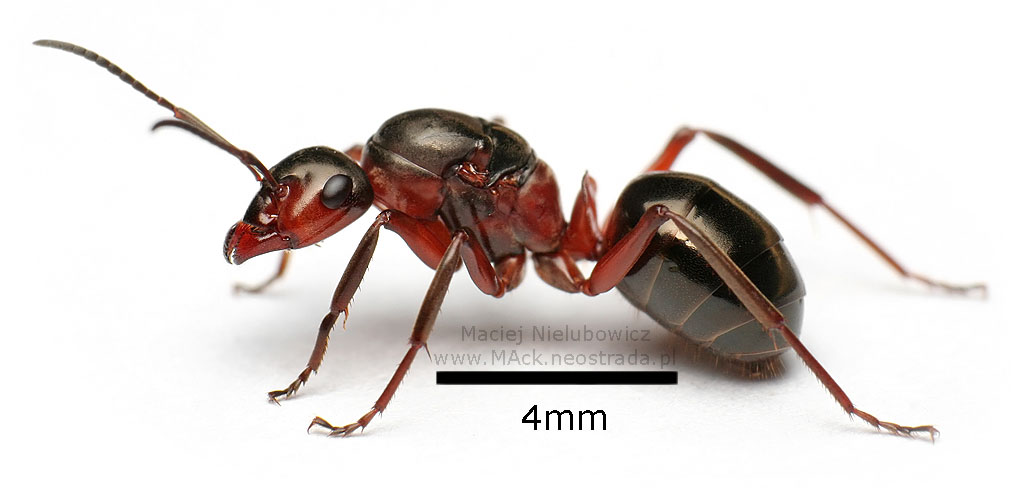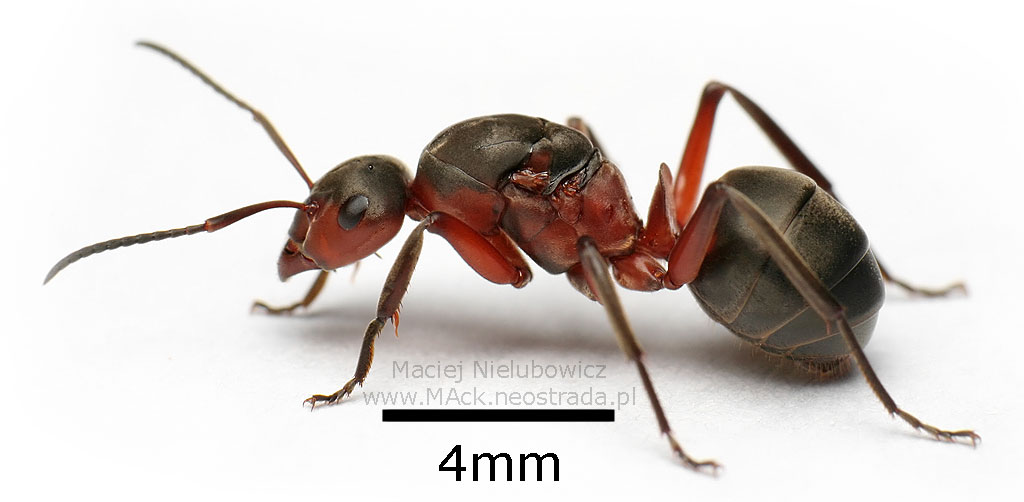



Best Answer Barristan , June 6 2019 - 12:07 AM
Hi,
this is a Formica s. str. queen. Unfortunately I can't tell you if it is Formica rufa, Formica polyctena, Formica pratensis etc.
These ants are social parasites, so you have to add pupae of workers of Serviformica species like Formica fusca, Formica rufibarbis etc.
Go to the full post


Formica cinerea (queen of 2018)
Formica rufibarbis (queen of 2019)
Formica pratensis? (queen of 2020)
Hi,
this is a Formica s. str. queen. Unfortunately I can't tell you if it is Formica rufa, Formica polyctena, Formica pratensis etc.
These ants are social parasites, so you have to add pupae of workers of Serviformica species like Formica fusca, Formica rufibarbis etc.
Oh wow. I did not expect that. Are you certain it's a wood ant?
Cause then I should probably release her. She might be too advanced for me (I can't imagine finding and identifying Formica fusca workers for her in time).
Is there any chance Formica cinerea workers would accept her (cause I have a colony of those at hand)? Or are they too aggressive?
And all wood ants are "near-threatened". Does that make it illegal to keep them?
Thanks a lot!
Formica cinerea (queen of 2018)
Formica rufibarbis (queen of 2019)
Formica pratensis? (queen of 2020)
yep I am.
This is a Formica polyctena queen:

This a Formica pratensis queen:

Only because they are on red list does not mean they are illegal to keep. You have to figure out if in your country it is forbidden or not.
You can also add Formica cinerea pupae. Adding workers will always be a risk.
Thank you!
Unfortunately my Formica cinerea don't have any brood at the moment.
I would love to keep such a cool species but I'm afraid I'm not qualified, so she'll be going back in the wild.
Formica cinerea (queen of 2018)
Formica rufibarbis (queen of 2019)
Formica pratensis? (queen of 2020)
Change of plan... We don't want to part with her.
I found several nests of what I assume is her own species (next to the place where we found her). The nests are flat (completely underground), so this would mean she's a Formica pratensis.
I caught a worker. She is 6 mm long, black with a reddish underside.
Would it be possible to give the queen workers of her own species? I would wait a few days after capturing the workers, then chill them all in the fridge and then connect their test tubes.
How many workers does she need? Is 3 enough? Or 5?
Here's the worker:

Edited by Quizzie, June 6 2019 - 11:38 AM.
Formica cinerea (queen of 2018)
Formica rufibarbis (queen of 2019)
Formica pratensis? (queen of 2020)
This is a Formica polyctena queen.
First off, feed her some honey or sugar water. Parasitic queens are usually malnourished inside their parent colonies, so it's always a good idea to feed them once you catch them.
Those workers would probably work as host workers. Ideally, you give her pupae, but alternatively, you can give her host workers right away. Although, the chances of the workers killing the queen or the queen killing the workers are higher if you introduce workers, instead of pupae.
Mound building Formica species generally have a large pupae storage in the middle of their mounds, so you could try digging one up to find some pupae. This method is pretty destructive though, so I would advise against it. Try flipping some rocks where you see black Formica workers; sometimes you can get lucky and find a nest with pupae right at the top. This method is much easier and less destructive.
If you prefer to give her workers right away though, scroll down this page for tactics on introducing host workers to parasitic queens.
I have also created a guide on raising parasitic Formica queens here. I suggest you read it before you introduce the workers; it will help you succeed at raising her.
Although it's hard, raising parasitic queens can be done. Here's a photo of my parasitic Formica queen with her host workers and first eggs:
Edited by AntsBC, June 6 2019 - 11:33 AM.
This is a Formica polyctena queen.
First off, feed her some honey or sugar water. Parasitic queens are usually malnourished inside their parent colonies, so it's always a good idea to feed them once you catch them.
...
Mound building Formica species generally have a large pupae storage in the middle of their mounds, so you could try digging one up to find some pupae.
...
Awesome, thanks for all those resources! I will read through all of it.
Our queen received a drop of maple syrup today, hope she likes it. I definitely won't be destroying a nest and stealing their brood.
How do you tell apart polyctena and pratensis? She was caught in a city park (woods are about 2 km away) and I've never seen any big mounds anywhere around. The Formica nests in the vicinity (that I already mentioned) are just holes in the ground.
I will try to raise her colony and I'll post any further questions or reports in a new thread.
Edited by Quizzie, June 6 2019 - 12:54 PM.
Formica cinerea (queen of 2018)
Formica rufibarbis (queen of 2019)
Formica pratensis? (queen of 2020)
0 members, 1 guests, 0 anonymous users